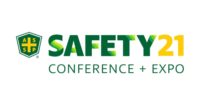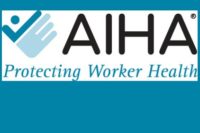2024 NSC Safety Congress & Expo
Less is more in safety content communications

Credit: Benita Mehta
Orlando — What do safety and health pros spend most of their time doing every day? Probably collecting, analyzing and communicating data.
Carey Usery, vice president of growth for Safety Stratus, gave a roomful of pros advice on how to turn information into action at a Monday afternoon education session at the National Safety Congress & Expo here in Orlando.
By following the dictate that “if it isn’t documented it didn’t happen,” pros are easily swamped by hundreds, thousands, even millions of data points, depending on the scope of their responsibilities – one location, regional areas, national coverage or global affairs. How do you ensure accountability – that the most important data is not overlooked or forgotten, that hazards are fixed, that incident or near miss causes are found, and that a mitigation solution is sustained long term?
Be strategic in your communications. Less is more. Don’t expect responses to fancy dashboards, says Usery. Use data to drive decisions now and to drive future decisions. Be specific about what decisions need to be made. By who and by when? Loop back to make sure those decisions were the right ones.
Be direct
“This is what I found and this is what needs to happen.” “This is what I want you to do and expect you to do.” You might be communicating to a supervisor, maintenance department, operations head, safety committee, or senior leaders.
Selling data that requires the attention and action of higher-ups, senior leaders with multiple agendas and priorities, means eliminating most trends and generalizations and being specific about what at-risk hazards, behaviors, conditions or situations need attention now, and who (department, team, individual, contractor, etc.) or what (piece of equipment, assembly line, warehouse, location in facility, etc.) needs to be addressed by a senior leader or group of managers.
Pros can feel collecting data sets them up for failure if action items are not corrected. Usery says 80% of hazards are corrected on the spot. For the remaining 20%, if you can’t fix everything as you want to, as soon as you want, find interim solutions first (remove equipment for instance) while devising long-term abatement.
Bottom line
The content of most safety communications should focus on action – specific steps that need to be taken, with accountability built in. What is the action, who is expected to deliver it, by when, and why the action is necessary.
Looking for a reprint of this article?
From high-res PDFs to custom plaques, order your copy today!






